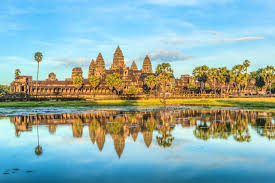- Home
- About Us
- Tel : +91 33 4022 9591
Siem ReapView all the popular packagesOffers
4 Popular Packege(s)
The heart of Siem Reapâs tourist district is known as Old Market, or Psah Chas. This part of town is home to a large concentration of restaurants and shops geared towards an ever-increasing number of American, British and European tourists. The influx of tourism has transformed a quiet little city into a bustling downtown area with an eclectic array of restaurants, bars and nightclubs that rivals any college town along with a night market that keep going well past midnigh.
Area 10299 Square Kilometers
Population 0.9 Million
Winter Temperature 26 C
Summer Temperature 31 C
Best Time To Visit Cambodia's dry season runs from November to April. Because Siem Reap is in the north of the country, it tends to be a little cooler, and temperatures are at their most comfortable from December to February, averaging around 25°C (77°F). There's the least rainfall in December and January.
By Air

The majority of visitors to Siem Reap arrive by air from Phnom Penh and Bangkok. There are also regular flights from Singapore, Ho Chi Minh City and Vientiane.
Siem Reap Airways offer several daily flights to/from Phnom Penh.
By Road

There are also daily boats and buses going to Siem Reap. Some visitors make their way to Siem Reap overland from Thailand via the Aranyaprathet/Poipet border crossing.
By River Ferry
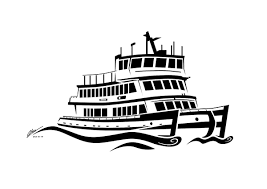
Daily ferries ply the Tonle Sap river and lake between Phnom Penh and Siem Reap. The end of the trip is marked by a hill, Phnom Krom, near the ferry dock at Chong Khneas 12 km south of Siem Reap. During the dry season, the ferry stops short of the dock and passengers transfer to smaller boats to traverse the final few hundred meters.
Angkor National Museum
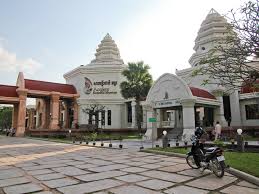
Looming large on the road to Angkor is the Angkor National Museum, a state-of-the-art showpiece on the Khmer civilisation and the majesty of Angkor. Displays are themed by era, religion and royalty as visitors move through the impressive galleries. After a short presentation, visitors enter the Zen-like âGallery of a Thousand Buddhasâ, which has a fine collection of images. Other exhibits include the pre-Angkorian periods of Funan and Chenla; the great Khmer kings; Angkor Wat; Angkor Thom; and the inscriptions.
Artisans Angkor – Les Chantiers Écoles
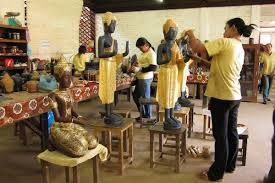
Siem Reap is the epicentre of the drive to revitalise Cambodian traditional culture, which was dealt a harsh blow by the Khmer Rouge and the years of instability that followed its rule. Les Chantiers Ãcoles teaches wood- and stone-carving techniques, traditional silk painting, lacquerware and other artisan skills to impoverished young Cambodians. Free guided tours explaining traditional techniques are available daily from 7.30am to 6.30pm. Tucked down a side road, the school is well signposted from Sivatha St.
Angkor Wat
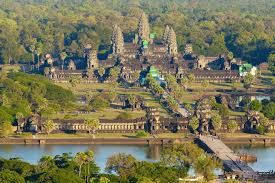
Angkor Wat is a temple complex in Cambodia and the largest religious monument in the world, with the site measuring 162.6 hectares.
Banteay Srei
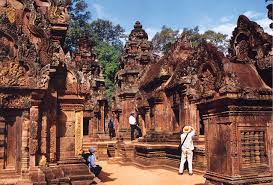
Banteay Srei or Banteay Srey is a 10th-century Cambodian temple dedicated to the Hindu god Shiva. Located in the area of Angkor in Cambodia.
Bayon

The Bayon (Khmer:Prasat Bayon) is a well-known and richly decorated Khmer temple at Angkor in Cambodia. Built in the late 12th or early 13th century as the official state temple of the Mahayana Buddhist King Jayavarman VII, the Bayon stands at the centre of Jayavarman's capital, Angkor Thom.Following Jayavarman's death, it was modified and augmented by later Hindu and Theravada Buddhist kings in accordance with their own religious preferences.
Angkor Thom
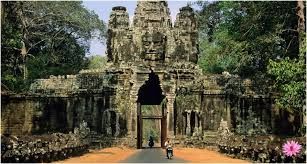
Angkor Thom,ocated in present-day Cambodia, was the last and most enduring capital city of the Khmer empire. It was established in the late twelfth century by King Jayavarman VII.It covers an area of 9 km², within which are located several monuments from earlier eras as well as those established by Jayavarman and his successors. At the centre of the city is Jayavarman's state temple, the Bayon, with the other major sites clustered around the Victory Square immediately to the north.
Overview

Siem Reap Shopping Where To Shop And What To Buy In Siem Reap This section of Siem Reap shopping proves that there's more to this quaint town than temple ruins and historical landmarks. As a tourist-friendly town, Siem Reapâs retail offerings mostly comprise Cambodian craftsmanship such as stone carvings, silverware, lacquer figurines, ceramics, and silks. Meanwhile, trendy fashion boutiques, art galleries, and fair-trade centres are conveniently set within central Siem Reap, where you can shop for authentic and value-for-money handicrafts, jewellery, and apparel. Visitors can also experience the local lifestyle by visiting Siem Reapâs numerous outdoor markets in the early morning, where they can shop for fresh produce and enjoy authentic Cambodian delicacies such as lok-lak, amok, and bai sach chrouk (pork with broken rice). Read on for our list of where to shop and what to buy in Siem Reap.
Angkor Night Market Off Sivatha Boulevard
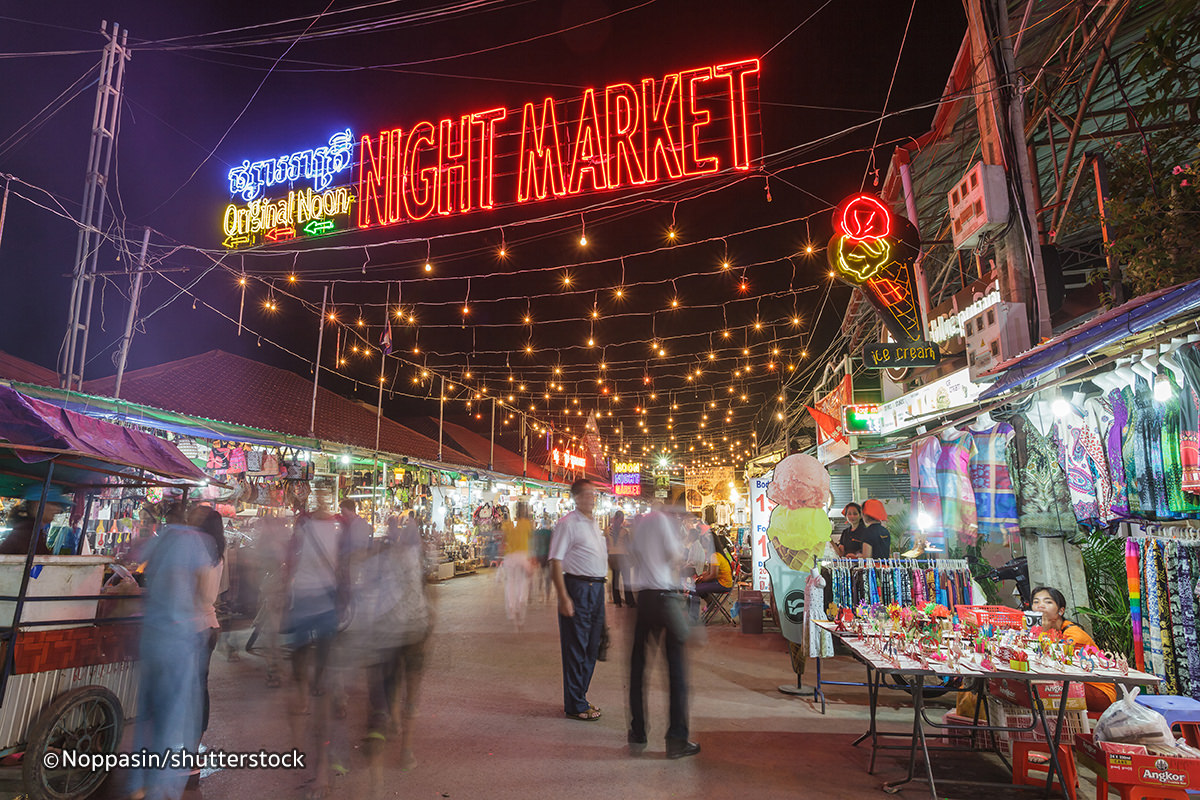
Angkor Night Market houses over 200 bamboo huts selling a wide range of clothing and handicrafts by local communities and non-governmental organizations. Set within a landscaped garden in central Siem Reap, the market was founded in 2007 to help preserve traditional Khmer handicrafts and improve the lives of Khmer people. Unlike most markets in Cambodia, Angkor Night Market offers only one-of-a-kind goods such as silk paintings, shadow puppets, handbags made from recycled materials, as well as intricate stone carvings embellished in silver or brass. Of course, you will also find a smattering of mass-produced Chinese tat that is a requisite of all markets in Southeast Asia. There are also several dining venues within the market, where you can enjoy live music performances, local delicacies, beers, cocktails, and smoothies at attractive prices.
Old Market (Psar Chas) Psar Chas Road
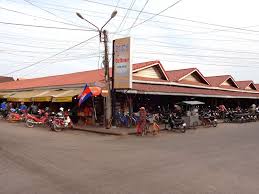
The Old Market, situated along Siem Reap River, is the townâs oldest Khmer market. Also known as Psar Chas, locals flock to this open-air market in the morning to shop for fresh produce and household items. Thereâs also a number of stalls located close to the entrance that offer inexpensive souvenirs such as antiques, silks, jewellery, and shoes â make sure you bargain hard as most items are priced significantly higher for tourists. The centre of Old Market hosts food vendors selling authentic Cambodian soups, rice dishes, baguettes, spiced frogs, dried fish, and pork sausages.
Made in Cambodia Market

Made in Cambodia Market is a vibrant outdoor market thatâs set in front of Shinta Mani Resort Siem Reap, offering a wide range of live performances, tasty local food, and Cambodian souvenirs. Held every Saturday, Sunday and Tuesday, renowned local artisans set up booths along Oun Khum Street to showcase their creations such as clothes, cosmetics, jewellery, paintings, and toys. One of the most unique items sold here is the Sombai rice spirits, which is infused with cinnamon, mangoes, star anise, and red chilies. If youâre feeling peckish, Made in Cambodia Market also hosts a number of food stalls, all of which are run by some of Siem Reapâs most prominent restaurants.
Artisans d’Angkor Stung Thmey Street
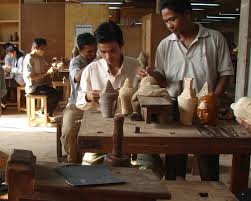
Artisans dâAngkor is a good option for those looking to purchase authentic Khmer handicrafts, textiles, and homeware. Its numerous workshops not only provide employment to over 1,000 local artisans, but all profits go back into funding its training program for impoverished youths. Visitors can also join a complimentary tour of the establishment, where they can observe the meticulous techniques of stone and wood carving, lacquering, silver plating, and silk painting. Artisans dâAngkor also runs three duty-free outlets which are located at Siem Reap International Airport, Phnom Penh International Airport, and Hong Kong Airport.
Blossom Cafe and Training Centre

One snack at Blossom Cafe and Training Centre will prove why itâs ranked as the 1 restaurant in Siem Reap on TripAdvisor.The café is known for its delicious and beautifully decorated cakes, cookies, and cupcakes, with addictive flavours like mango cake with passionfruit cream cheese, and chocolate cherry cheesecake with chocolate ganache. In addition to offering freshly baked treats that are well-worth trying, Blossom is actually a training café that provides vocational training and employment opportunities for Cambodian women. Customers are encouraged to linger and take advantage of the free Wi-Fi, while enjoying a Fairtrade tea or coffee.
Bugs Café
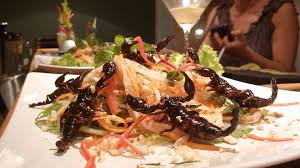
The name isnât a metaphor: Bugs Café literally specializes in insect-based dishes, including scorpions; crickets; grasshoppers; and tarantulas. The insects are cooked into tapas-sized portions, using a fusion of Khmer and French cooking techniques and seasonings. For diners that are feeling less adventurous, most of the dishes can be prepared without insects as well. The restaurant also offers a great selection of cocktails, which might help a few diners work up the courage to try the olive and parmesan cupcakes, garnished with crickets and silkworms, or the scorpion and green papaya salad.
Destination Dining
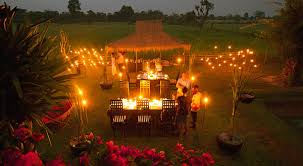
Destination Dining is based on a unique concept: thereâs only one table. Although this private dining experience is ideal for a romantic couplesâ dinner, the restaurant can accommodate up to six people. Diners are seated in an intimate pavilion on a lotus pond, the perfect location to sip wine and admire the sunset. With no other diners to attend to, itâs almost guaranteed to be the most attentive service youâll ever experience. The set menu includes welcome drinks, a bottle of wine, starters, entrees, and even a cab back to your hotel afterwards. As you would expect, thereâs only one booking per night, so itâs important to make a reservation beforehand.
Father’s Restaurant
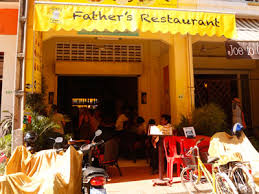
With family ownership and a warm, welcoming atmosphere, Fatherâs Restaurant is certainly appropriately named. Offering a mix of Khmer, Chinese, and Western food, the affordable prices and friendly atmosphere make it a popular choice for locals and budget travelers. Menu highlights include the banana flower salad (which can be mixed with a choice of pork, chicken or beef), and the fried waterlily with shrimp. If diners donât see anything on the menu they like, special requests are always welcomed. If the ingredients are available, the staff are more than willing to accommodate.

